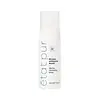What's inside
What's inside
 Key Ingredients
Key Ingredients

 Benefits
Benefits

 Concerns
Concerns

 Ingredients Side-by-side
Ingredients Side-by-side

Water
Skin ConditioningSodium Cocoyl Glutamate
CleansingSodium Citrate
BufferingSodium Lauroyl Sarcosinate
CleansingCapryloyl Glycine
CleansingCoco-Betaine
CleansingLactic Acid
BufferingZinc Gluconate
Skin ConditioningPropanediol
SolventPotassium Sorbate
PreservativeLaminaria Digitata Extract
Skin ProtectingCoco-Glucoside
CleansingGlyceryl Oleate
EmollientCarnosine
Skin ConditioningDisodium Adenosine Triphosphate
Skin ConditioningCitric Acid
BufferingTocopherol
AntioxidantHydrogenated Palm Glycerides Citrate
EmollientWater, Sodium Cocoyl Glutamate, Sodium Citrate, Sodium Lauroyl Sarcosinate, Capryloyl Glycine, Coco-Betaine, Lactic Acid, Zinc Gluconate, Propanediol, Potassium Sorbate, Laminaria Digitata Extract, Coco-Glucoside, Glyceryl Oleate, Carnosine, Disodium Adenosine Triphosphate, Citric Acid, Tocopherol, Hydrogenated Palm Glycerides Citrate
Water
Skin ConditioningPanax Ginseng Root Extract
EmollientActinidia Arguta Fruit Extract
Skin ConditioningDisodium Laureth Sulfosuccinate
CleansingCoco-Betaine
CleansingSodium Cocoyl Apple Amino Acids
Skin ConditioningMalus Domestica Fruit Extract
AntioxidantCitrus Limon Fruit Extract
MaskingCitrus Aurantium Dulcis Fruit Extract
MaskingGlycerin
HumectantLaminaria Japonica Extract
Skin ProtectingLavandula Angustifolia Extract
Skin ConditioningCamellia Sinensis Leaf Extract
AntimicrobialCentella Asiatica Extract
CleansingMelaleuca Alternifolia Leaf Extract
PerfumingBetaine
HumectantButylene Glycol
HumectantCitric Acid
BufferingLactic Acid
Buffering1,2-Hexanediol
Skin ConditioningCeramide NP
Skin ConditioningWater, Panax Ginseng Root Extract, Actinidia Arguta Fruit Extract, Disodium Laureth Sulfosuccinate, Coco-Betaine, Sodium Cocoyl Apple Amino Acids, Malus Domestica Fruit Extract, Citrus Limon Fruit Extract, Citrus Aurantium Dulcis Fruit Extract, Glycerin, Laminaria Japonica Extract, Lavandula Angustifolia Extract, Camellia Sinensis Leaf Extract, Centella Asiatica Extract, Melaleuca Alternifolia Leaf Extract, Betaine, Butylene Glycol, Citric Acid, Lactic Acid, 1,2-Hexanediol, Ceramide NP
Ingredients Explained
These ingredients are found in both products.
Ingredients higher up in an ingredient list are typically present in a larger amount.
Citric Acid is an alpha hydroxy acid (AHA) naturally found in citrus fruits like oranges, lemons, and limes.
Like other AHAs, citric acid can exfoliate skin by breaking down the bonds that hold dead skin cells together. This helps reveal smoother and brighter skin underneath.
However, this exfoliating effect only happens at high concentrations (20%) which can be hard to find in cosmetic products.
Due to this, citric acid is usually included in small amounts as a pH adjuster. This helps keep products slightly more acidic and compatible with skin's natural pH.
In skincare formulas, citric acid can:
While it can provide some skin benefits, research shows lactic acid and glycolic acid are generally more effective and less irritating exfoliants.
Most citric acid used in skincare today is made by fermenting sugars (usually from molasses). This synthetic version is identical to the natural citrus form but easier to stabilize and use in formulations.
Read more about some other popular AHA's here:
Learn more about Citric AcidCoco-Betaine is the natural version of Cocamidopropyl Betaine. It is often derived from coconuts.
Coco-Betaine is a surfactant, meaning it helps remove dirt and oil from the skin.
Lactic Acid is another well-loved alpha hydroxy acid (AHA). It is gentler than glycolic acid but still highly effective.
Its main role is to exfoliate the surface of the skin by loosening the “glue” that holds dead skin cells together. Shedding those old cells leads to smoother, softer, and more even-toned skin.
Because lactic acid molecules are larger than glycolic acid, they don’t penetrate as deeply. This means they’re less likely to sting or irritate, making it a great choice for beginners or those with sensitive skin.
Like glycolic acid, it can:
Lactic acid also acts as a humectant (like hyaluronic acid). It can draw water into the skin to improve hydration and also plays a role in the skin's natural moisturizing factor (NMF) in the form of sodium lactate.
Studies show it can boost ceramide production to strengthen the skin barrier and even help balance the skin’s microbiome.
To get results, choose products with a pH between 3-4.
Lower strengths (5-12%) focus on surface exfoliation; higher strengths (12% and up) can reach deeper in the dermis (deeper, supportive layer) to improve skin texture and firmness over time.
Though it was originally derived from milk, most modern lactic acid used in skincare is vegan. It is made through non-dairy fermentation to create a bio-identical and stable form suitable for all formulations.
When lactic acid shows up near the end of an ingredient list, it usually means the brand added just a tiny amount to adjust the product’s pH.
Legend has it that Cleopatra used to bathe in sour milk to help reduce wrinkles.
Lactic acid is truly a gentle multitasker: it exfoliates, hydrates, strengthens, and brightens. It's a great ingredient for giving your skin a smooth, glowing, and healthy look without the harshness of stronger acids.
Read more about some other popular AHA's here:
Learn more about Lactic AcidWater. It's the most common cosmetic ingredient of all. You'll usually see it at the top of ingredient lists, meaning that it makes up the largest part of the product.
So why is it so popular? Water most often acts as a solvent - this means that it helps dissolve other ingredients into the formulation.
You'll also recognize water as that liquid we all need to stay alive. If you see this, drink a glass of water. Stay hydrated!
Learn more about Water